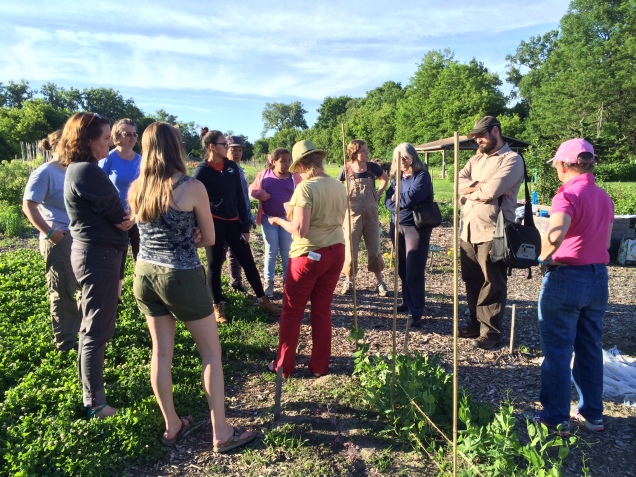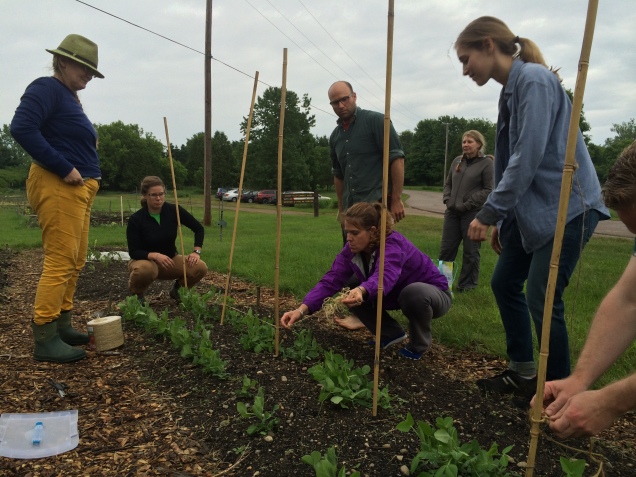Activities:
- Planting Squash
- Planting Sweet Potatoes

From finding baby birds to harvesting strawberries, this week’s class was full of adventures. First on the list was learning how to plant squash or the Cucurbitaceae family. With numerous varieties and a truly delectable taste squash makes for a popular garden favorite. The beautiful thing about squash is it is easy to plant and most varieties tend to be very prolific. Every gardener has harvested a zucchini that is to big even for the most aggressive loaf of zucchini bread.

Traditionally squash is planted in mounds. The mound should be about three inches high and about eighteen inches in diameter. Some gardeners find it helpful to dig a little trench around the mound to act as a moat so that the plant’s roots have enough access to water vs. allowing the water to simply run off the mound without any benefit to the plant.
Once the mounds are constructed it is time to plant the seeds. Between three and five seeds should be planted in each mound and the mounds should be spaced according to the specifications on your seed packet. For most squash the distance should be four to six feet. Remember, squash plants tend to get very large especially if they are the vine and not the bush variety. Spacing your squash plants appropriately will help decrease the prevalence of mildew diseases that squash are particularly susceptible to.

After planting the squash, we all got sweet on some sweet potatoes. To plant sweet potatoes you need to construct berms for the slips. The berms are little hills that provide warm, loose soil for the sweet potatoes. Sweet potatoes are not started from seed potatoes but from “slips.” Sweet potato slips are sprouts that are grown from mature sweet potatoes. Each potato can produce up to fifty slips that are each planted individually. The slips should be planted in berms spaced about three feet apart. The slips should have about a foot between each one to allow for enough room for the vines to grow.
To plant the slips, dig a hole about 4″ or 5″ deep and 3″ wide. Place one slip in each hole with the roots pointing down. Position the slip so that the bottom half will be covered with dirt while the top half with all of the new leaves is above ground.

To close out class we all munched on some fresh strawberries. The yummy taste had us all looking forward to the upcoming harvest of many of the other fruits and vegetables that are growing in the Teaching Gardens.
Coming up this week:
Community Teaching Garden Potluck: 6:30pm Thursday, June 25 at Ethan Allen Homestead. Bring a dish to share and your own plate and silverware. All welcome!









